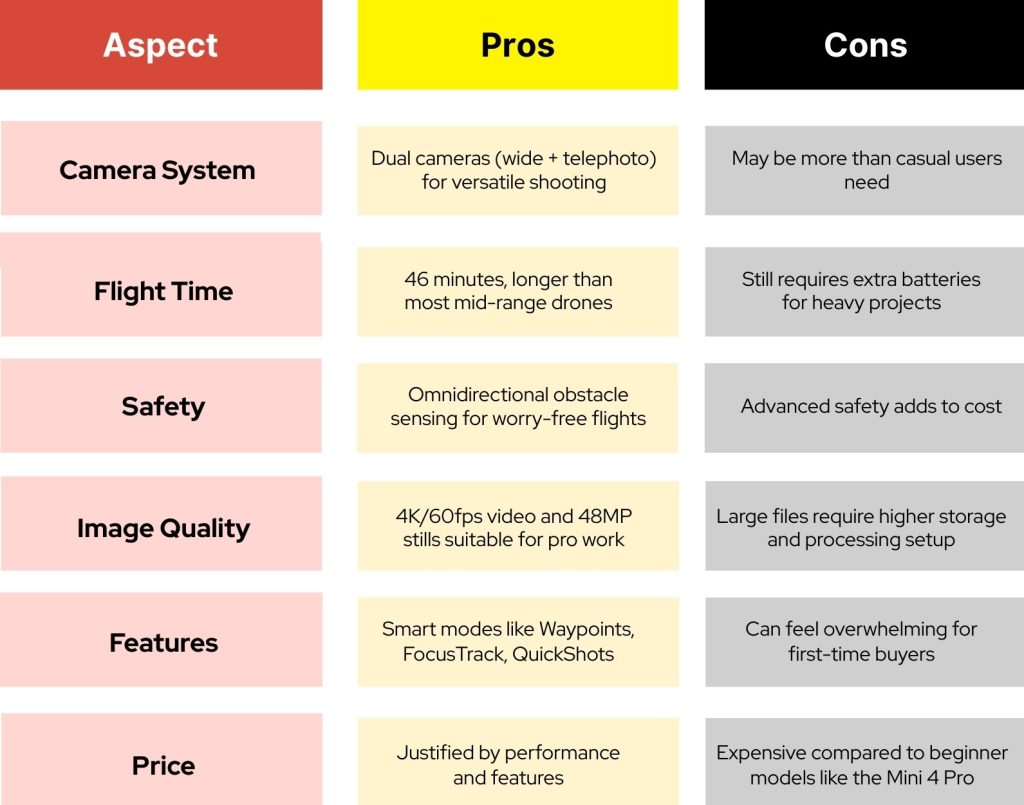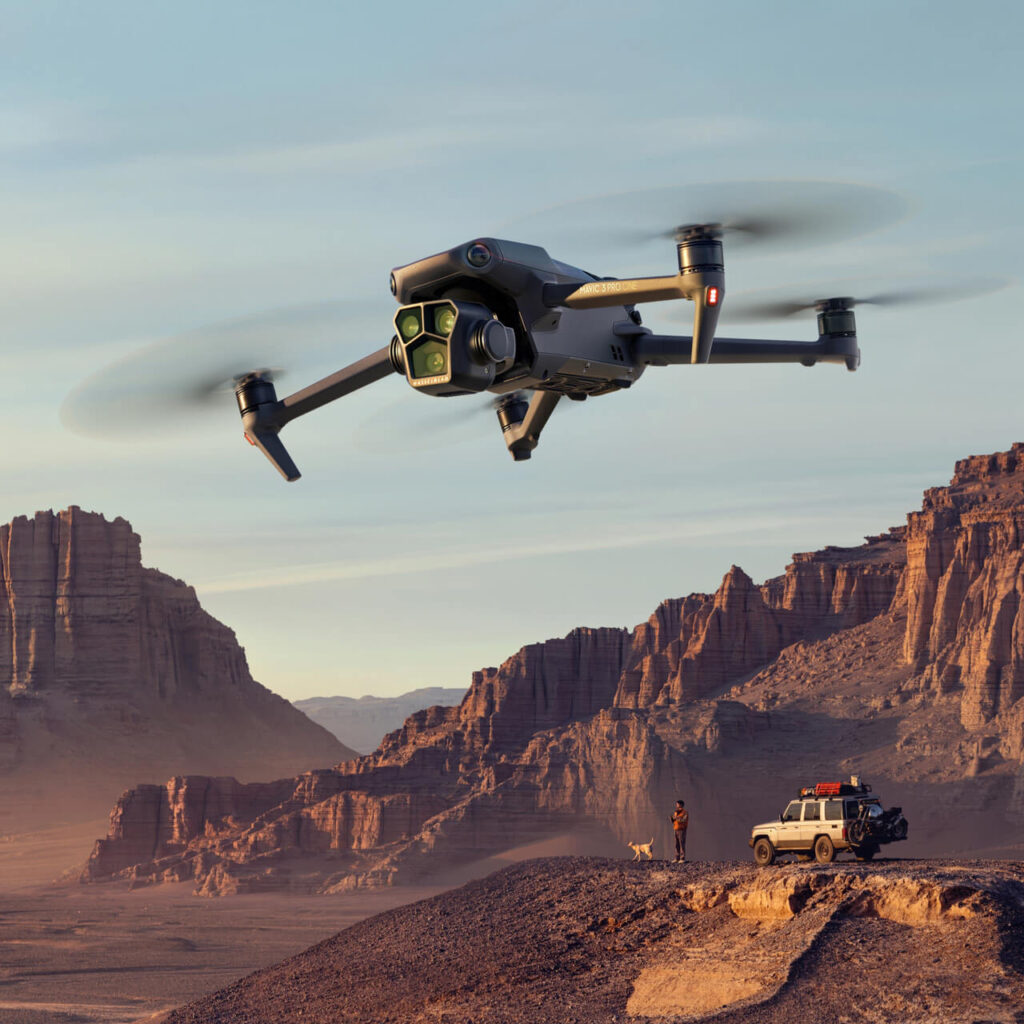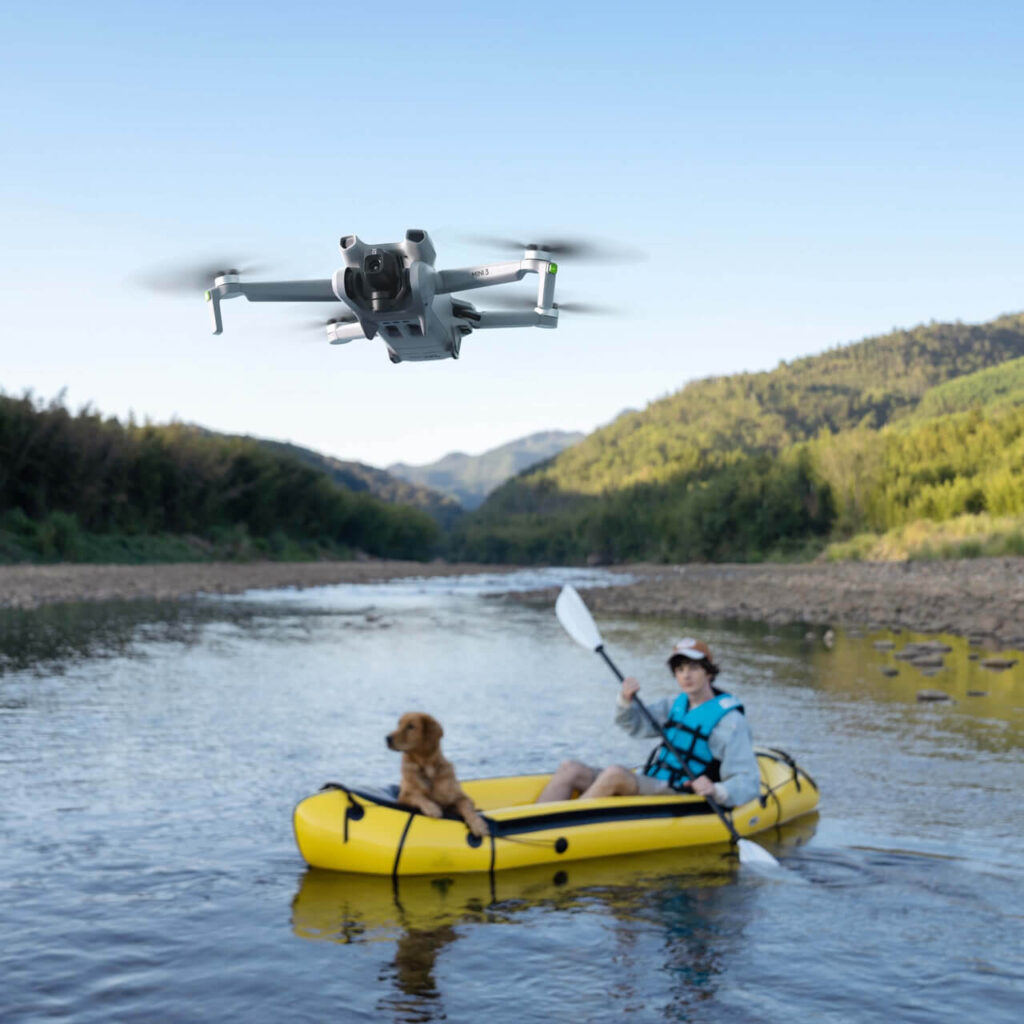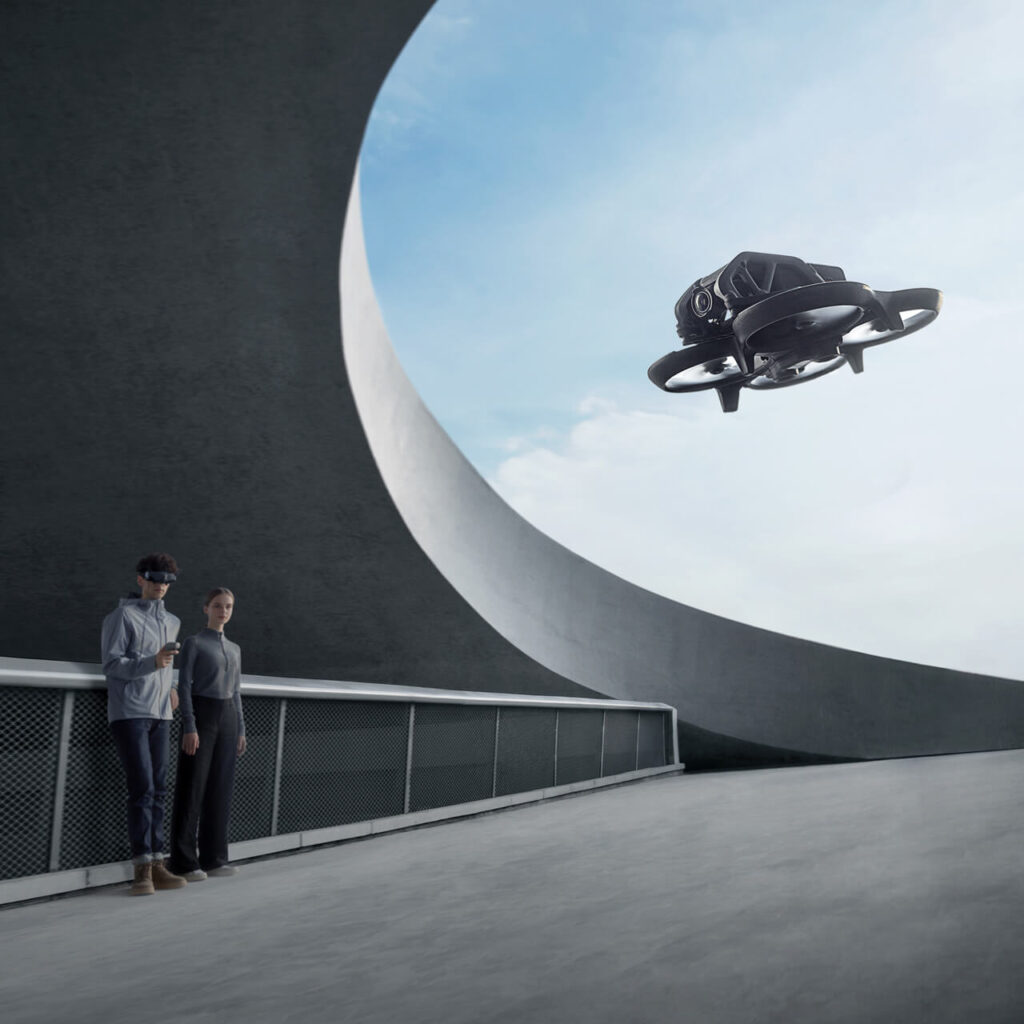If you’ve been exploring the world of drones lately, chances are you’ve come across the DJI Air 3. Positioned as a versatile, mid-range option in DJI’s lineup, it’s catching the attention of creators, professionals, and even small businesses. But the big question remains: is DJI Air 3 worth it for your work or passion project?
That’s exactly what we’re going to unpack in this guide. Buying a drone today isn’t just about specs on paper it’s about how well the machine aligns with your goals. A travel vlogger needs portability, a real estate agency looks for smooth cinematic footage, while an inspection company prioritizes safety and long flight times. The DJI Air 3 tries to deliver a balance of all these needs, but is it the right fit for you?
At Jetayu Gadgets, we help buyers like you navigate these decisions every day. As an authorized seller of multiple global drone brands including DJI, Autel, IdeaForge, Enzo, Parrot, and Skydio we’ve seen how customers weigh their options before investing. In this blog, we’ll break down the DJI Air 3’s features, explore its business and creative applications, list its pros and cons, and help you decide whether it’s the right investment for your specific aim.
By the end, you’ll have a clear picture of whether the DJI Air 3 belongs in your toolkit or if another model might serve your vision better.
Key Features of the DJI Air 3
Before deciding if the DJI Air 3 is truly worth it for your work or passion project, it’s important to look at what this drone actually offers. Unlike entry-level models such as the Mini series (if you’re curious, check out our earlier comparison on DJI Mini 3 vs. Mini 4 Pro Which Combo Is Right for You?), the Air 3 is designed as a step-up drone. It blends portability with professional-grade features, making it attractive to creators and businesses alike.
Here are the standout features:
- Dual-Camera System: Equipped with a wide-angle and 3x telephoto camera, giving you more creative control compared to single-lens drones.
- 46-Minute Flight Time: Longer than many drones in its class, reducing the need to constantly swap batteries.
- Omnidirectional Obstacle Sensing: Covers all directions, providing confidence even for beginners worried about accidents (our blog on Worried About Crashing Your First Drone? Here’s Why DJI’s Safety Features Have Your Back dives deeper into this).
- 4K/60fps Video and 48MP Stills: Ensures sharp, cinematic footage suitable for both professional projects and passion-driven storytelling.
- Advanced Tracking & Waypoints: Lets you automate shots for smoother workflows especially helpful for surveyors, real estate creators, or travel vloggers (as we discussed in Vlogging Your Solo Adventure? Here’s What Only a Drone Can Film).
- Compact Yet Professional Build: Lightweight, foldable, and easy to carry, striking a balance between a beginner’s Mini and a professional Mavic.
In many ways, the DJI Air 3 stands as the middle ground between beginner-friendly drones (like those covered in Buying a Drone for the First Time? The DJI Mini 4 Pro Makes It Easy to Fall in Love with Flying) and high-end enterprise models. For someone who wants to take their aerial work seriously whether for business efficiency or creative freedom the Air 3 offers a compelling package.
How the DJI Air 3 Fits Different Goals

When asking is DJI Air 3 worth it, the answer depends on what you want to achieve. This drone isn’t built for just one type of user it’s versatile enough to serve both business needs and personal creative goals. Let’s explore how it adapts to different scenarios.
For Content Creators and Filmmakers
The DJI Air 3 is often seen as the “next step” after beginner drones. Its dual-camera setup and advanced tracking modes allow vloggers, travel filmmakers, and YouTubers to capture cinematic shots without needing heavy, expensive gear. If you’re thinking, is buying a drone enough to start my journey as a content creator, the Air 3 is proof that the right equipment can accelerate your growth.
- Example use: A travel vlogger filming Himalayan landscapes can use waypoints for smooth, repeatable routes, similar to what we discussed in Touch the Sky. Capture Your India from the Himalayas to the Sea with Your Drone.
- Why it matters: It adds cinematic depth that handheld cameras can’t replicate.
For Real Estate, Construction, and Surveys
Businesses increasingly use drones for aerial mapping, inspections, and marketing visuals. While enterprise drones like the Mavic 3 Enterprise might be more advanced, the DJI Air 3 provides excellent value for smaller agencies or independent surveyors.
- Example use: Real estate firms use its 48MP stills for property showcases. Builders and surveyors benefit from obstacle sensors and longer flight times, making it safer to operate on busy sites (a point we touched in Why Builders Now Trust Drones More Than Ground Teams for Site Surveys).
- Why it matters: It reduces manpower and speeds up project timelines.
For Hobbyists and Passion Projects
Not every drone buyer is looking at ROI. Some simply want to explore aerial photography as a hobby. The Air 3 bridges the gap between basic recreational drones and pro-level machines, giving enthusiasts room to grow.
- Example use: A hobbyist who bought their first Mini might upgrade for better stability and smarter features. (Our post Buying a Drone for the First Time? The DJI Mini 4 Pro Makes It Easy to Fall in Love with Flying shows where beginners usually start.)
- Why it matters: It gives long-term satisfaction without outgrowing the drone too quickly.
For Gifting and Special Occasions
More people now gift drones to loved ones who are creators or photographers. The Air 3, with its professional edge and portability, makes it a thoughtful option. As we shared in Is Your Partner a Photographer or Videographer? Surprise Them With the Perfect Drone Gift, the right drone can be more than a gadget it can spark new possibilities.
Pros and Cons of the DJI Air 3
No drone is perfect. To answer is DJI Air 3 worth it, we need to weigh what it does brilliantly against where it might fall short. Here’s a breakdown:
Pros of the DJI Air 3
- Dual-Camera Versatility: Wide-angle + telephoto for creative flexibility.
- Extended Flight Time: Up to 46 minutes, better than many mid-tier drones.
- Comprehensive Safety: Omnidirectional obstacle sensing minimizes crash risk (a big reassurance for those who read Worried About Crashing Your First Drone? Here’s Why DJI’s Safety Features Have Your Back).
- Cinematic Quality: 4K/60fps and 48MP stills suitable for professional output.
- Smart Features: FocusTrack, Waypoints, and QuickShots for automated, creative filming.
- Balanced Design: Portable yet robust, bridging the gap between Mini drones and enterprise models.
Cons of the DJI Air 3
- Price Point: Higher than beginner drones (if you’re on a budget, our post on Best Drones Under ₹50,000 in India (2025) for Beginners and Creators is worth checking).
- Learning Curve: Not as plug-and-play as the Mini series.
- Overkill for Casual Users: Hobbyists who only fly occasionally may not fully use its advanced features.
- Licensing Considerations: Depending on where you fly, registration or a drone pilot license might be required (covered in detail in Can I Fly My Drone Freely or Do I Need a License? Understand the Rules).
DJI Air 3: Pros vs Cons at a Glance

This balance shows that while the Air 3 is not the cheapest or simplest drone, it delivers professional-grade performance in a portable package making it a strong investment if your goals are serious.
Buying Guide – Who Should Invest in the DJI Air 3?
The DJI Air 3 sits in an interesting position: not too basic, not overly advanced. That makes it appealing to a wide variety of buyers. But is DJI Air 3 worth it for you? Let’s break it down by user profile.
1. Content Creators and YouTubers
If your passion is storytelling through video or photography, the Air 3 is a solid choice. It’s more powerful than the Mini series yet doesn’t feel as bulky as professional drones. Our earlier guide on Is Buying a Drone Enough to Start My Journey as a Content Creator? explains how the right drone can transform your career, and the Air 3 fits perfectly into that transition stage.
- Best for: Vloggers, travel filmmakers, lifestyle creators
- Why it works: Dual cameras offer cinematic versatility, while long flight time reduces interruptions
2. Small and Medium Businesses
Businesses in real estate, construction, and surveys can benefit from the DJI Air 3 without jumping into enterprise-level drones like the Matrice series. Features like Waypoint flying and obstacle sensing are excellent for mapping and site documentation. For more industry-based comparisons, our blog Which DJI Drone Is Best for You? Top Picks by Industry & Use Case provides detailed insights.
- Best for: Builders, property developers, event planners
- Why it works: Affordable compared to high-end enterprise drones, yet powerful enough for professional deliverables
3. Hobbyists and Drone Enthusiasts
If you started with an entry-level drone and are ready to upgrade, the Air 3 makes sense. It’s compact, safe, and fun to fly. In fact, many enthusiasts who began with the DJI Mini 4 Pro (see our review Buying a Drone for the First Time? The DJI Mini 4 Pro Makes It Easy to Fall in Love with Flying) see the Air 3 as their natural next step.
- Best for: Serious hobbyists who want more creative control
- Why it works: Offers advanced features without overwhelming complexity
4. Gift Buyers
Looking for a premium yet practical gift? The DJI Air 3 is an excellent surprise for partners or family members who are into photography or videography. As we discussed in Is Your Partner a Photographer or Videographer? Surprise Them With the Perfect Drone Gift, a drone isn’t just a gadget it’s an experience.
- Best for: Milestone gifts, professional surprises
- Why it works: A step above entry-level models, offering a wow factor while being easy to learn
Who Should Consider Alternatives?
- Budget Buyers: If cost is the biggest factor, start with the Mini 4 Pro or check our blog on Best Drones Under ₹50,000 in India (2025) for Beginners and Creators.
- Enterprise Users: If you need thermal imaging, multispectral data, or heavy payloads, explore advanced enterprise models.
DJI Air 3: Buyer Profiles at a Glance

In short, the DJI Air 3 is best for serious hobbyists, creators, and small businesses who want professional-grade performance without the complexity or cost of enterprise drones.
FAQs About the DJI Air 3
1. How long can the DJI Air 3 fly on a single charge?
The DJI Air 3 offers up to 46 minutes of flight time under optimal conditions. Real-world flight time may vary depending on wind, temperature, and usage of features like obstacle avoidance or recording in 4K.
2. Is the DJI Air 3 suitable for beginners?
Yes, but with some learning. The Air 3 has intelligent flight modes and omnidirectional obstacle sensing that make flying easier and safer. However, beginners may face a learning curve compared to entry-level drones like the DJI Mini series.
3. Can the DJI Air 3 handle professional filming?
Absolutely. With dual cameras (wide + telephoto), 4K/60fps video, and 48MP photos, it’s capable of producing cinematic-quality footage suitable for professional content creation.
4. Do I need a license to fly the DJI Air 3 in India?
Yes, if your drone weighs more than 250 grams, which the Air 3 does. You must follow DGCA regulations, register your drone, and adhere to local flight rules.
5. How portable is the DJI Air 3?
The Air 3 is foldable and lightweight, making it easy to carry in a backpack or drone bag. Its compact design bridges the gap between ultra-portable drones and larger enterprise models.
6. What safety features does the DJI Air 3 have?
It comes with omnidirectional obstacle sensing, automatic return-to-home, and geofencing. These features make it safer to fly even in crowded or complex environments.
7. Can I upgrade my Air 3 with accessories?
Yes. You can use extra batteries, ND filters, carrying cases, and even specialized controllers to enhance performance and shooting flexibility.
8. Is the DJI Air 3 worth buying for business purposes?
Yes. Its combination of reliable flight performance, professional camera quality, and smart features makes it suitable for small businesses in real estate, construction, and inspections.



